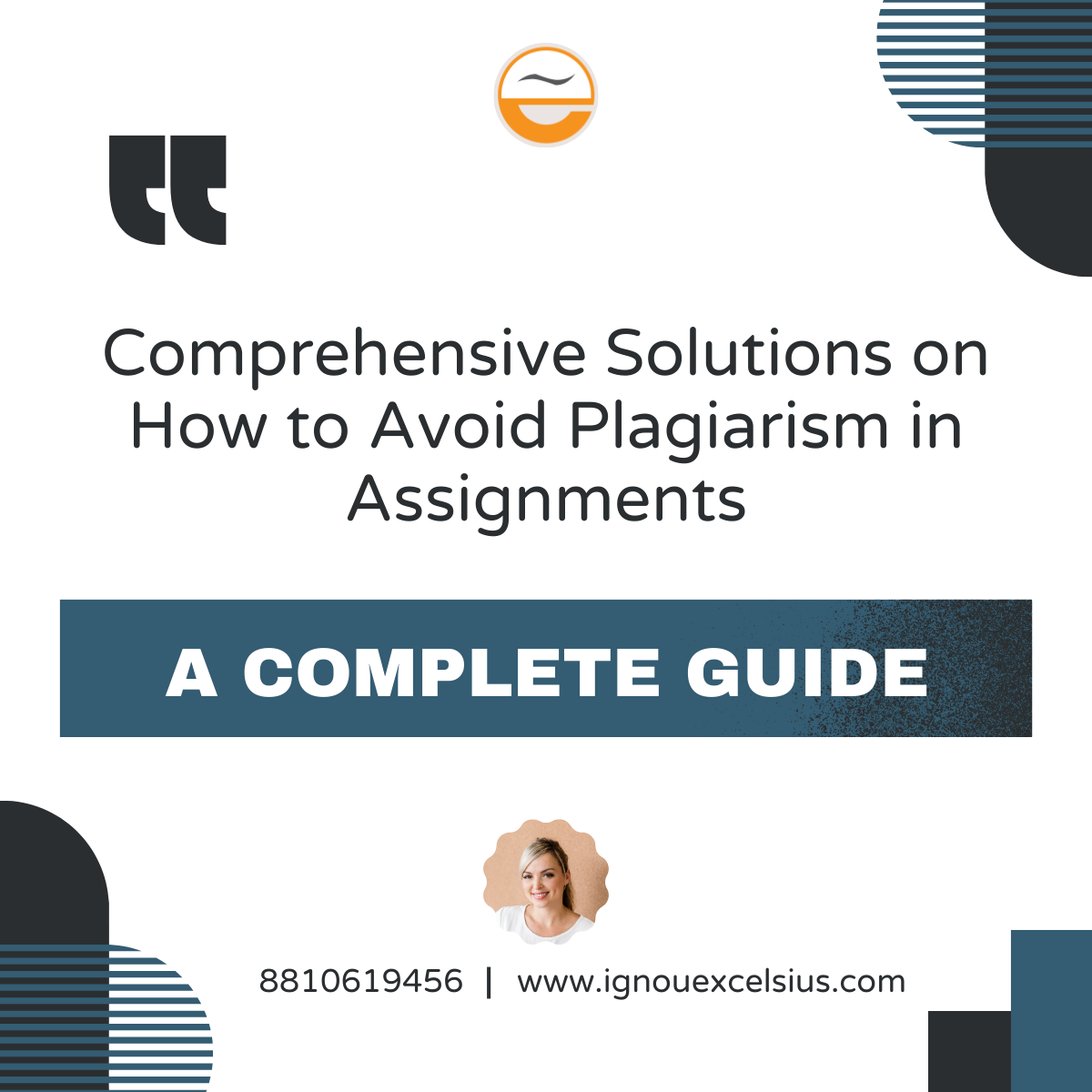
Comprehensive Solutions on How to Avoid Plagiarism in Assignments – A Complete Guide
The term Plagiarism appears frequently in academic settings, carrying the feeling of anxiety and worry. Plagiarism can negatively impact your academic performance and create obstacles if you are an IGNOU student attempting to turn in a stellar project or a professional writing a report. It is an act of misrepresenting the work of another as your own and goes against the values of honesty, creativity, and integrity. You can incur serious repercussions, such as losing your reputation in the classroom, receiving lower grades, or, in the worst situation, facing legal action. But in today's environment, it has become quite challenging to avoid copying. Since there is so much information available online, it is difficult to distinguish between original ideas and plagiarized ones. Copying and pasting from web resources sounds tempting due to accessibility and speed and with deadlines pressurising, it seems like a quick fix to larger problems. Plagiarism is not about copying and pasting from a website, it happens many times even without intent. It is crucial to cite a source, to get rid of plagiarism in your assignment. Get rid of the plagiarism trap and produce original work using the right tools and knowledge. Several comprehensive solutions and strategies can help you stay ahead professionally and academically. Here is a guide that covers practical tips and tricks on safeguarding your work.
Understanding Plagiarism
It is now crucial for us to understand what plagiarism is. It occurs when someone else’s work, ideas, and words are used without proper credit given to them. It ranges from copying and pasting text from somewhere, failing to cite your previously published work, or paraphrasing without citation. Although information is now more accessible on the internet, the risk of plagiarism has increased to a great extent. Many times it happens unintentionally but it can be avoided completely with diligence.
Different forms of Plagiarism:
In order to prevent plagiarism, it is important to identify its many forms.
- The simplest and most evident type of plagiarism is called "direct plagiarism," which consists of verbatim copying from the source without any acknowledgement.
- Self-Plagiarism: Reusing previously completed work or turning in the same assignment for many classes without permission are common ways that people plagiarize themselves.
- Mosaic plagiarism is the utilization of concepts and phrases from several sources without giving due credit, giving the impression that the work is original.
- Unintentional Plagiarism: This occurs when you cite someone incorrectly or fail to credit them. Although this occurs accidentally, kids risk facing harsh repercussions.
- How can plagiarism be prevented?
- The following useful tips can help you ensure that your work is free of plagiarism:
- Knowing the requirements: Be sure you fully understand the requirements before beginning any work. These could involve thorough research and sources in addition to citation formats like APA, MLA, and others. Inadvertent plagiarism could occur if you read the assignment incorrectly.
- Keep track of your sources: When conducting research, be sure to maintain an extensive list of your references. You can organize your references using programs like EndNote. Keeping an orderly list will help you remember where an idea came from, which lowers the possibility of plagiarism.
- Correctly paraphrase it: Writing the entire concept again in your own terms and providing reference acknowledged. It shows that pupils have a solid understanding of the subject and are able to express it in their own words. But even when paraphrasing, crediting the source is still required.
- Use quotation marks sparingly: Even if quoting is required for assignments, it should only be done infrequently and correctly. Citing the source is essential, particularly when using direct quotes or distinctive words that are difficult to paraphrase.
- Make careful to provide credit to the sources you use, regardless of whether you are using exact quotes, concepts, or paraphrases. Use the appropriate citation format; they vary depending on the academic discipline.
- Make use of technologies for detecting plagiarism: Use plagiarism detection software such as Turnitin, Grammarly, or Copyscape on your assignment. They assist in locating inadvertent plagiarism and quickly fixing it.
- Find a balance between research and your ideas: Do not rely on other people’s work and find a balance between your analysis and ideas. Your assignment is a reflection of your thinking and understanding.
How to do Ethical writing?
It is crucial to use ethical writing to avoid plagiarism. This means that you must be honest about the source of your ideas and give proper credit to others. Respect the work of others and contribute to the reference with integrity. Make sure that your job is unique and acknowledge the hard work of others by citing them.
Final Thoughts:
Avoid Plagiarism by following these rules and building the habit of original and ethical writing. Implement the strategies to avoid plagiarism and ensure that your work is authentic. If you are looking for online assignments then ignouexcelcius.com provides IGNOU assignments that are plagiarism-free and written in the correct format, so order your assignment today.